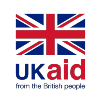“Cover your face with a mask, sanitise, use gloves, and maintain a physical distance” is a new standard for human interaction. In Nepal, we do not dare to miss any safety measures, especially during a field visit to collect the stories of children caught up in the most exploitative and dangerous forms of labour.
Preparing to collect the life stories in COVID times
It is only after receiving training on how to collect life stories and doing the necessary preparation to ensure we operated in a COVID-secure way we finally felt ready to begin this important part of our work. Early August we went to the field to begin the piloting phase of life story collection of seven children and youths in the worst form of child labour.
We worked closely with focal persons, social leaders, influential community members, who supported us in preparing parents and children about the life story process and other logistics. Particularly challenging was the odd-even vehicle movement role was imposed by the Nepal Government as a part of the COVID mitigation strategy.
Making it happen
As said by an eminent American philosopher, Ralph Waldo Emerson, “Once you make a decision, the universe conspires to make it happen”, so with determination and teamwork, seven paired team members (CLARRISA staff and professional researchers) visited children at Shakti Samuha (Partner Organisation), Voices of Children (Child Care Home) and Manohara Slum for stories collection.
Before entering into the life story sharing and writing process, mini-games were played with the children to build rapport and offered chocolates and water to create easiness to share their stories comfortably. After sharing the purpose of our visit, consent was taken, from the children and guardians.
Given the context, it was an incredibly challenging environment and the children were sharing some difficult and unthinkable experiences. Naturally, some children got upset and teary while sharing their stories; some shared their stories along with drawings about their dreams; some were excited; and, some were reserved. They were given plenty of time to relax and mingle.
What did we learn?
Every child has a unique story. As a team, we learned that trust-building before story collection and writing pace of documenter to capture the story of a child is a vital aspect in ensuring the children are comfortable and feel able to share their experiences.
This piloting phase of life story collection has also shown that the pandemic has escalated children’s vulnerabilities. You might think that with all the restrictions in place, it would make sense to wait and collect these stories another time. In fact, it is the very opposite. The few stories we have collected show us that there is indeed more urgency to hear these stories. But we need to just hear them, we need to amplify them.
To eliminate the worst form of child labour and for the sustainable progress of children, our commitment with determination is a must, which will enable us to the success we seek.
